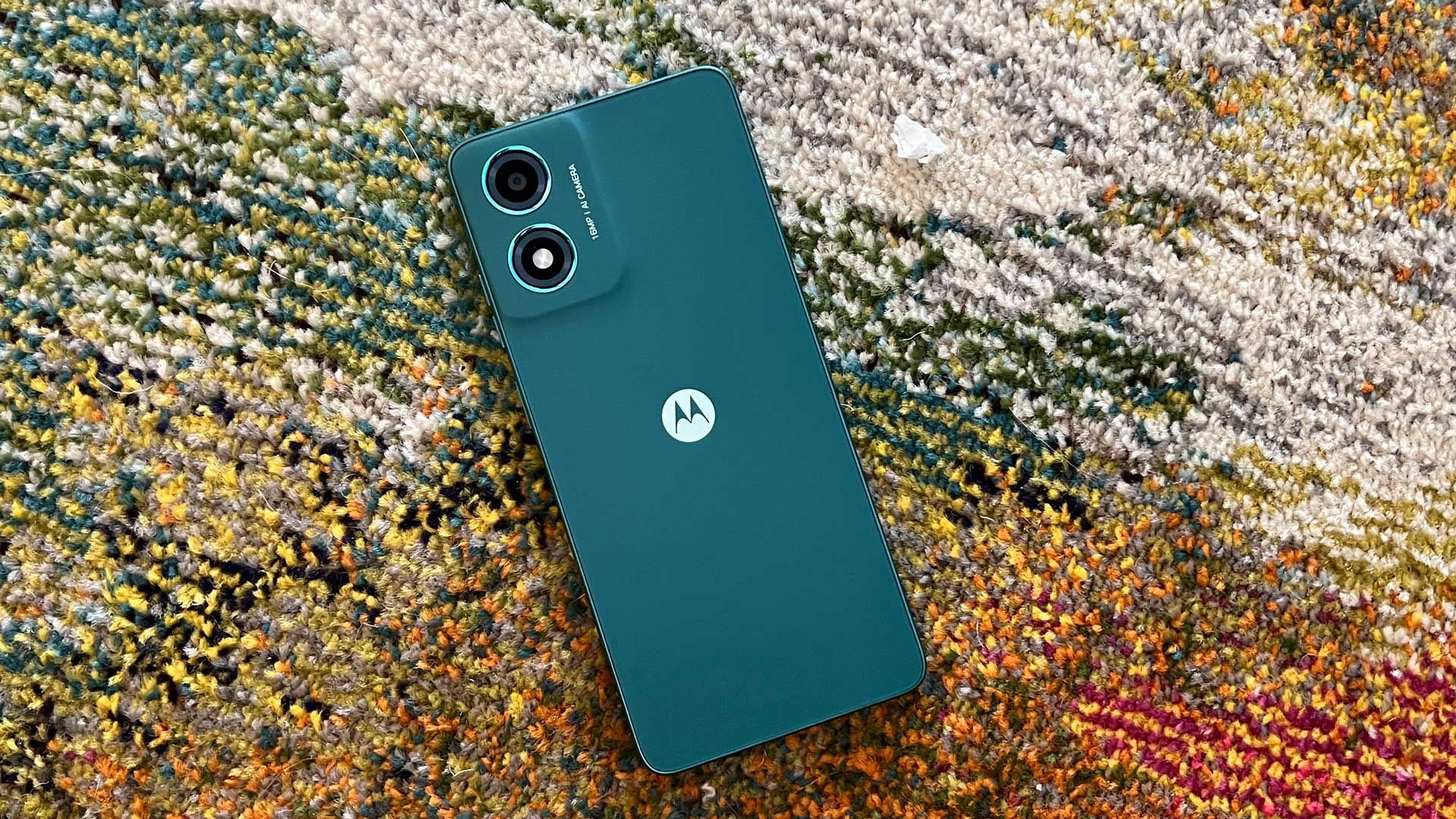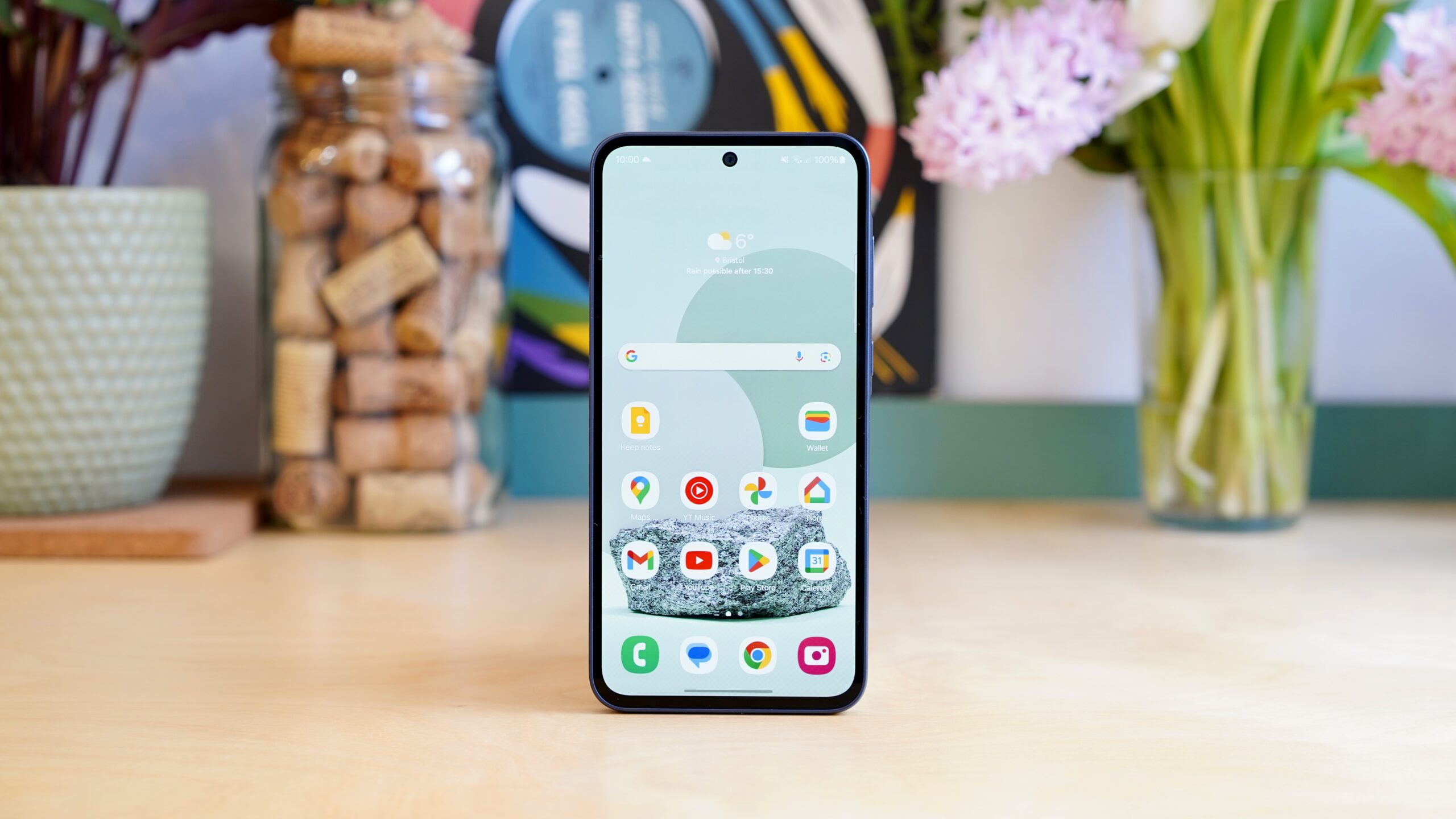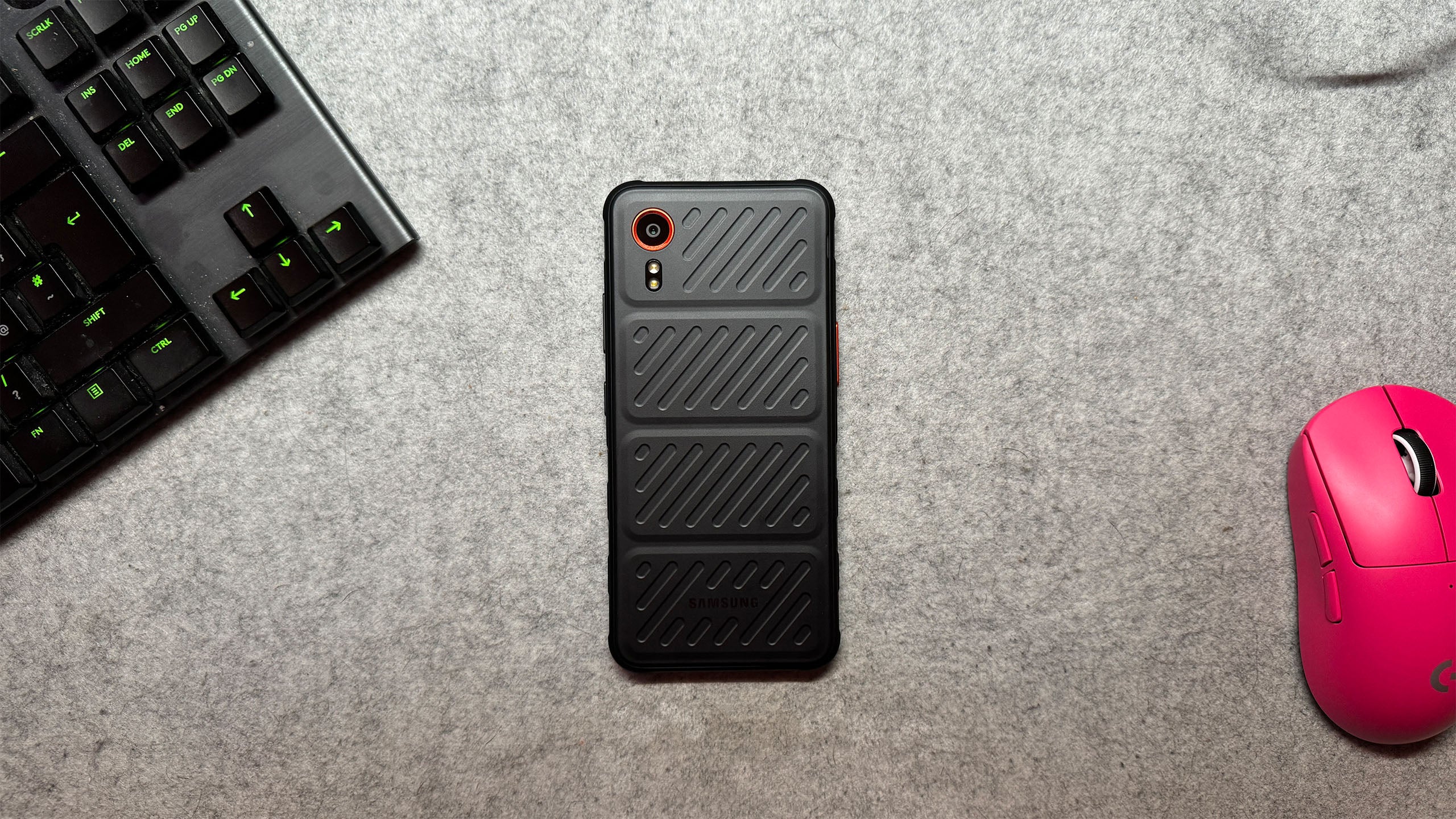Poco M4 Pro 5G Review
Poco's latest gets a lot right
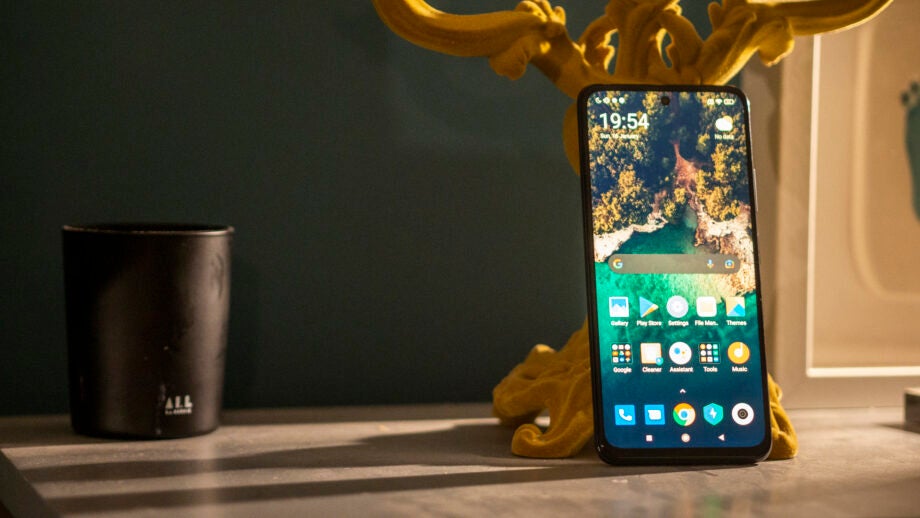

Verdict
The Poco M4 Pro gets a lot right, with a pleasant display, great battery life, surprisingly good haptics, a comfortable design, durable build and generally competent cameras it is quite a well-rounded smartphone. But for a bit more ‘wow’ in the imaging department and faster performance it would be an instant recommendation, however this is enough smartphone for most people.
Pros
- Good all-round handset
- Great battery life
- Strong screen
Cons
- Not the best camera quality
- Gaming performance was sub-par
- Not the cleanest user interface
Availability
- UKRRP: £249
Key Features
- 90Hz display refresh rateWith a significantly higher refresh rate than comparably-priced devices, scrolling should feel extra smooth
- 5000mAh batteryThis phone has a very healthy battery capacity, so you shouldn’t be running out of charge unexpectedly early
- 33W fast-chargingPowered up with the included 33W charger should take your phone from 0-100% charge in just 59 minutes
Introduction
With the protracted demise of Huawei in 2020 came a gap in the global smartphone market that many have been eager to fill. Of all the competitors out to claim the crown, Xiaomi has enjoyed particular success since that point and in the west with a suite of keenly targeted budget devices.
On the surface, the Poco M4 Pro is another excellent entry from the manufacturer aiming to be a contender for the best cheap phone.
For an outlay of under £250 it offers a FHD+ 90Hz display, a large 5000mAh battery, a 50MP main camera, 5G connectivity and an advanced haptic motor. Of course, what a phone is like in use is more important than a list of specifications, does the reality of the Poco M4 Pro match up to expectations?
Design and Screen
- Curved plastic design
- The screen is flat
- The rear has a loud camera array
Most smartphones ultimately look highly similar. As far as hardware goes, there is little deviation beyond the typical ‘glass sandwich’ rectangle to look forward to. The Poco M4 Pro of course doesn’t move away from this, however it does go a little further than a lot of its budget brethren in trying to stand apart and look a little different from the crowd.
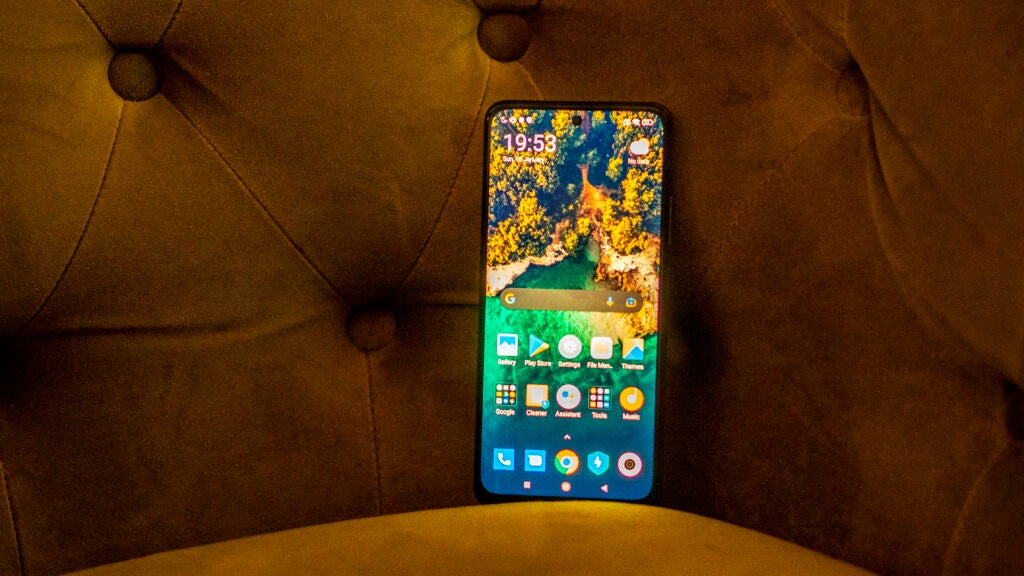
Much of this effort is apparent in the brash, maybe divisive, camera cutout used. This takes up a good third of the rear of the device as a dark hued square with rounded corners. It hosts the ‘Poco’ branding, a housing for the main sensor and a somewhat unusual camera array.
This is unusual solely as only one of the cutouts actually houses a sensor, in this case the 8MP ultrawide. The remainder host the flash and two stickers, why these were included in this way is unclear, as their inclusion feels ultimately like something of a deception.
Nonetheless, the phone is well-balanced and is perfectly usable one-handed, even despite the large screen. This is clearly more than just the usual budget plastic slab cranked out by many brands – it has enough weight and heft to feel solid, but doesn’t err on the side of bulky.
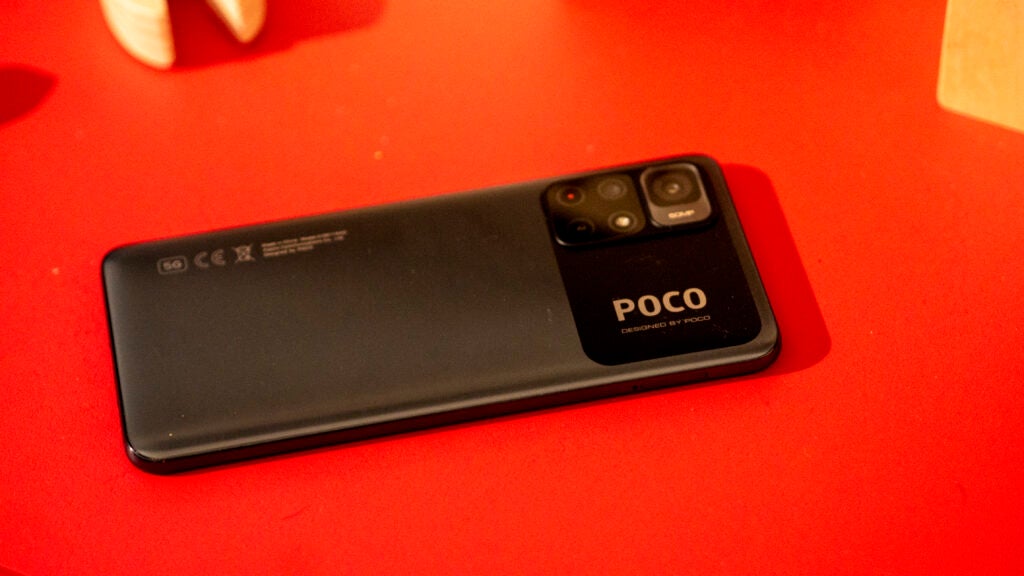
The Poco is definitely not a device for those who prefer restrain. Between the large logo, the large camera cutout and more, this isn’t a phone which is going to scream ‘professional’ at a board meeting. It offers enough to give a little flavour without going so far as to be unpalatable, but some will find its ‘tone’ off-putting.
As might be expected, the Poco comes with a large screen in tow, and at 6.6 inches it is definitely on the bulky side. With minimal bezels and only a pinhole cutout, the screen covers roughly 85% of the handset’s front surface, with only a slight chin beneath the panel betraying its budget origins.
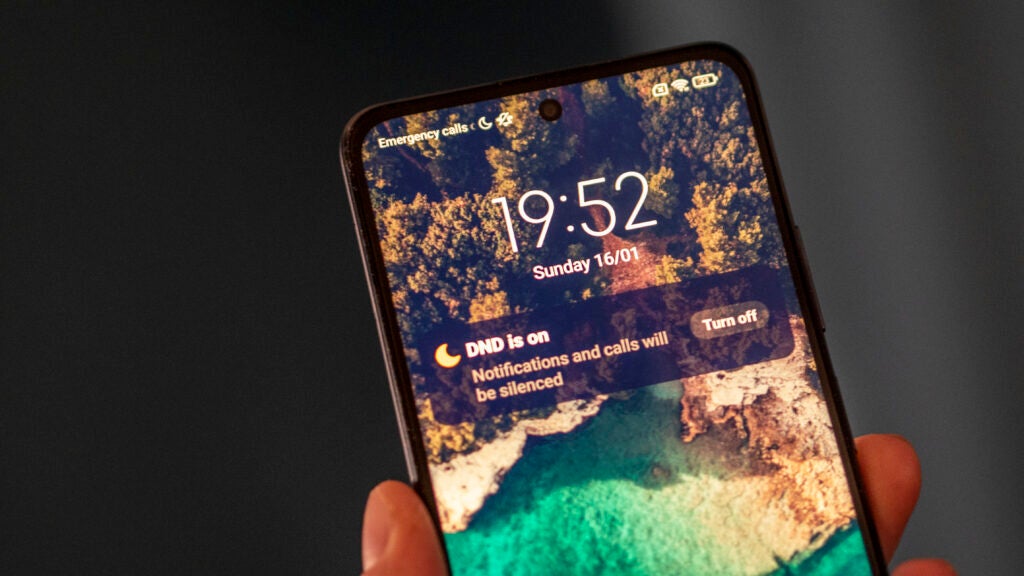
At 1080p it is pixel dense enough to please most screen die-hards, and it offers a 90Hz refresh rate too, adding a little extra fluidity in use that allows it to feel a little more premium than its price tag might suggest. Beyond pixels and refresh rates, it gets roughly bright enough to stand up to winter sunlight while also getting dim enough to read in the dark. Moreover, it offers a balanced colour palette, skewing neither warm nor cold in general testing.
Camera
- Two camera modules
- Main sensor has 50MP
- Ultrawide sensor has 8MP
Quad cameras have been promoted as delivering a higher tier photography experience since at least 2020, especially in the budget space.
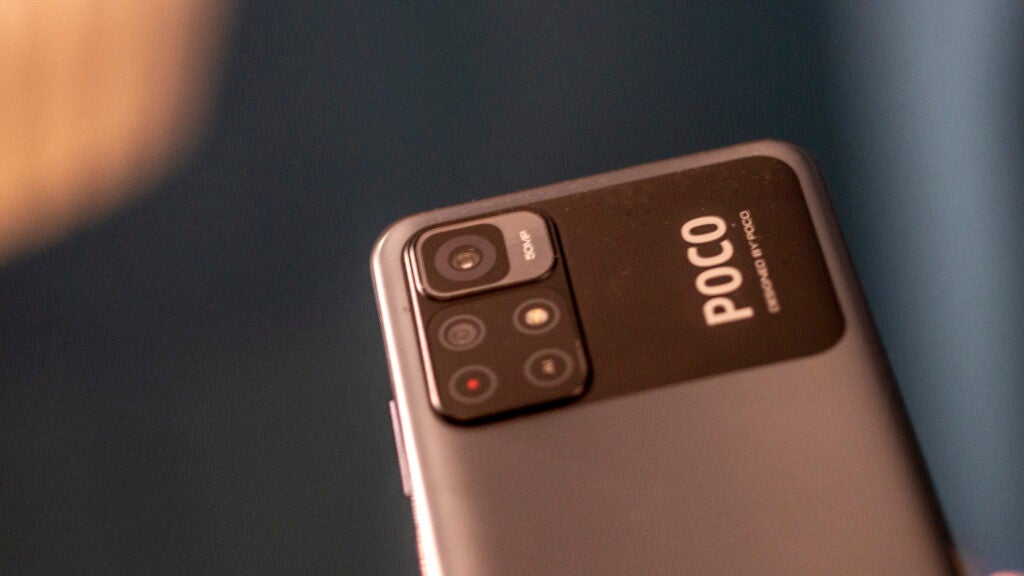
That the Poco M4 Pro offers only two snappers on the rear is something of a surprise, maybe even a revolution. That would of course be the case if Xiaomi hadn’t tried to disguise its supposed lack of cameras, but the focus on two sensors is welcome nonetheless.
Too often manufacturers include more without focussing on the quality, leaving devices that have lots of versatility but little to offer in terms of photographic quality.
The Poco makes do with a 50-megapixel f/1.8 main sensor and an 8-megapixel f/2.2 wide-angle camera with a 16MP selfie snapper upfront, so where the competition only seems to be bulking up, it cuts back.
This sense of restraint can be seen in the camera app, in that it isn’t a complete clone of that available for iPhones but more of a respectful tribute.

With swipes to the left or right it is possible to move through the various settings and modes, with a suite of toggles on the left side allowing quick access to HDR, the ‘AI’ mode and more.
In all, it is familiar and is never an obstacle to taking a photo, even if it does launch slowly on occasion. A slight oddity is the need to download additional ‘modes’. By default, the panorama option is available however the device needs to connect and install the necessary software before it can begin.

On the whole, photos taken with the Poco M4 Pro are decent. Detail is mostly well represented for the price class, however the noise reduction algorithm is a little heavy handed when it comes to foliage and fine detail. Colours are warm and pleasant without being too saturated, and portraits have reasonable subject separation.

The HDR is too aggressive when triggered and tends to destroy detail further, and this performance mostly carries over to the night mode. This does brighten up dark images but at the expense of sharpness and saturation.

On the front side, selfies are mostly decent if generally lacking in dynamic range, while the ultra-wide sensor doesn’t capture images worth using or sharing.

There is nothing about the camera performance of the Poco M4 Pro that either particularly delights or disappoints. It doesn’t hang with the best of its price class, nor does it linger at the bottom, instead it delivers a mostly respectable output that will be enough to record impromptu life moments. If camera quality is an absolute concern it will be best to look elsewhere however.
Performance
- Runs a MediaTek Dimensity 810
- Comes with 6GB of RAM and 128GB of storage by default
- Runs Xiaomi’s MIUI software skin
With a 6nm Mediatek Dimensity 810 processor coupled with 6GB of RAM and 128GB of storage, the Poco M4 Pro has just enough to hang with the competition when it comes to performance.
In general use, I found it to be more than acceptable. For simple tasks like scrolling through the interface, messaging, browsing the internet and more it has enough power to never present any problems. It doesn’t hang or lag where this might be expected with cheaper handsets.
These positive impressions have a limit of course, and the limitations of the chipset used quickly come to the fore when attempting any kind of gaming. Here is where the high refresh rate and pixel-dense screen conspire to make the Poco a little hot under the collar.
On the likes of PUBG, detail settings needed to be pushed down to medium in order to achieve a respectable frame rate when playing, and this experience proved to be true across most graphically intensive titles. Casual games never proved to be an issue, so if gaming isn’t a concern then this will likely not be of interest – but keen mobile gamers should steer clear of this handset.
The interface, in typical Xiaomi fashion, is neither here nor there in terms of its looks and functionality. In essence, it wants to be iOS but with far more features included, and feels bloated as a result. There are additional app stores, useless inclusions such as ‘virus scanners’, a settings menu as long as your arm and a general feeling of indecision with regards to design.
It is certainly easy enough to adapt to and use MIUI, however it tends to feel like conflicting approaches colliding with one another rather than a cohesive product.
Those who prefer a more staid version of Android, such as that found on Nokia devices will not find much to like in the Poco M4 Pro.
A pleasant inclusion is a more powerful haptic motor than is usually found in budget smartphones. This allows the phone to click, peep and pop while in use much in the same way as more premium handsets. Its inclusion does a lot to make the Poco feel more lively than many of its budget brethren and is wholly positive as a result.
Battery Life
- 5000mAh battery
- Capable of 33W fast charging
- Comes with a fast charger in the box
The Poco M4 Pro 5G, as is now expected for the price class, comes with a 5000mAh battery in tow, with the ability to fast charge at 33W.
That is to say that, the battery coupled with the relatively efficient processor means that this is a device that can keep going and going.
On my best day, with heavy messaging, internet browsing and watching video, I managed a total of seven hours of screen time. Individual use cases will of course mean that there will be variance in these results, but in general the Poco has great battery life. With light to moderate usage, it will be possible to get to the end of a second day.
Moreover, the inclusion of fast charging means that when the time comes to recharge, it is easy to do so quickly. Though 33W isn’t the fastest offered on the market, and isn’t quite as much as the likes of Realme offers, it is quick enough to make a difference.
On average I managed to recharge the battery a smidgen over 50% in 30 minutes, which is a good showing and a great help when in a pinch.
Latest deals
Should you buy it?
Ticks a lot of boxes for the price: If you’re looking for a good all-round handset, and especially one with a good screen and strong battery life, this is a decent choice
Big on camera performance: If camera quality and gaming are your top priorities, or if you just can’t stand cluttered software, then you should consider some other options
Final Thoughts
The budget smartphone segment is as competitive as it has ever been, standing out from the crowd is a difficult proposition. With the Poco M4 Pro 5G, Xiaomi faces a stiff challenge from the Realme 8i, Nokia and indeed many of the other best cheap phones and best mid-range phones.
With a distinctive design language, a good screen, great battery life and generally decent performance, it certainly does just about enough to earn a place at the table. A smartphone is an experiential item, more than the sum of a list of specifications — and crucially the experience of using the Poco M4 Pro is a pleasant one. But for better camera performance, a bit more power and less cluttered software it would be an instant recommendation.
Instead, this is merely a good choice for the price point, and a phone to look out for.
How we test
We test every mobile phone we review thoroughly. We use industry standard tests to compare features properly and we use the phone as our main device over the review period. We’ll always tell you what we find and we never, ever, accept money to review a product.
Camera tested in variety of situations with all modes
Tested with synthetic benchmarks and real world use
FAQs
The three official colours are named Poco Yellow, Power Black, Cool Blue
Yes, the Poco M4 Pro 5G features a 3.5mm headphone jack.

